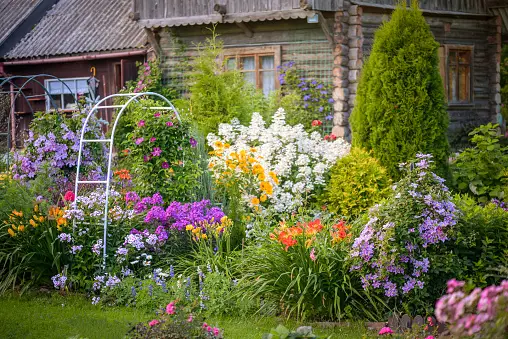
Gardening is a labour of love, but when the monsoon season arrives, it can bring challenges that even the most dedicated gardeners find daunting. Excessive rainfall, waterlogged soil, and potential plant diseases can make maintaining your garden a real struggle. So, this guide will explore some effective solutions to help you overcome the monsoon challenges and keep your garden thriving. From proper drainage systems to plant care tips, discover everything that matters.
The Monsoon Season: A Blessing and a Challenge
The monsoon season brings much-needed relief to the gardens, replenishing the soil and nourishing your plants. However, it can also bring excessive rainfall, leading to waterlogging, erosion, and plant diseases. Understanding these conditions is the first step in effectively managing them.
The Importance of Drainage Systems
Proper drainage systems are crucial during the monsoon season. Without them, your garden can turn into a swamp, causing root rot and other plant diseases. They ensure that excess water flows away from your plants, preventing waterlogged soil and fungal growth.
Effective Solutions
Raised Beds: Consider creating raised beds in your garden. Raised beds allow for water to drain better as it flows away from the plants’ roots. They also provide improved aeration, preventing waterlogged soil.
Install Pipes: Installing pipes for water to drain can be a game-changer for your garden. These pipes redirect excess water to designated areas, preventing water buildup in your garden beds. Consult with a professional to determine the most effective water-draining system for your garden’s layout.
Use Gravel and Mulch: Incorporate gravel or mulch around your plants. These materials allow water to flow through them. They also reduce soil erosion and help maintain soil structure.
Container Gardening: Consider container gardening during the monsoon season. Containers have built-in holes, ensuring excess water drains away from your plants. This approach also provides you with the flexibility to relocate your plants to protected spots when heavy rains occur.
Plant Care Tips
Pruning and Trimming
Regular pruning and trimming can help prevent the spread of diseases in your garden. Remove diseased or damaged plant parts to ensure the overall health of your garden.
Adequate Spacing
Plant your garden with proper spacing between plants. Crowded plants are more susceptible to diseases as air circulation becomes limited. Adequate spacing allows air to flow freely, reducing the risk of fungal infections.
Fertilise Wisely
Be mindful of fertilisation during the monsoon season. Excess fertiliser can lead to rapid plant growth, which may be more vulnerable to diseases. As such, use slow-release or organic fertilisers and follow recommended dosages.
Regular Inspections
Inspect your plants regularly for signs of disease or pest infestations. Early detection allows you to take prompt action, preventing further damage.
Protecting Your Garden Infrastructure
Reinforce Garden Structures
Strong winds can accompany monsoon rains. Hence, reinforce your garden structures, such as trellises, fences, and supports, to withstand these conditions.
Secure Garden Furniture
If you have garden furniture, make sure to secure it or move it to a sheltered area during heavy rains. This prevents damage and prolongs the life of your outdoor furniture.
Conclusion
Gardening during the monsoon season can be a challenging yet rewarding experience. By understanding the unique conditions that the monsoon brings and implementing effective solutions, you can protect your garden and keep it flourishing. Also, remember the importance of drainage systems to prevent waterlogging and soil diseases. Apply proper plant care techniques to maintain the health of your garden. Finally, don’t forget to safeguard your garden infrastructure to ensure its longevity. With these strategies in place, you can enjoy a thriving garden even during the rainiest of seasons. Happy gardening!
